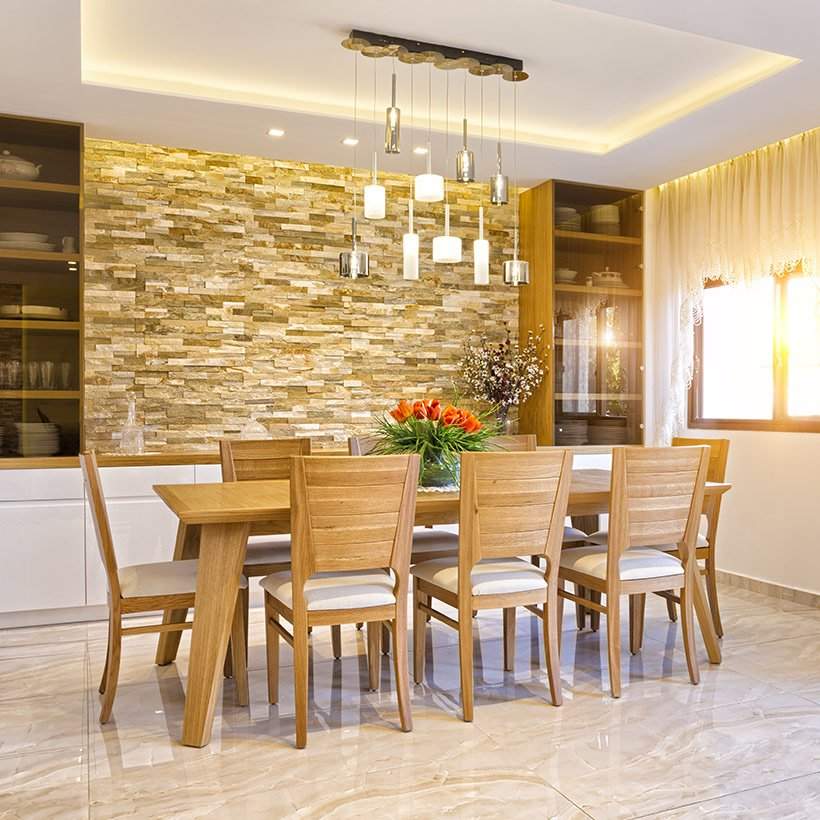Dining Room Wall Cabinets: Styles and Designs

Dining room wall cabinets are a fantastic way to add storage, style, and functionality to your dining space. They come in various styles, materials, and designs, allowing you to find the perfect fit for your taste and needs. Let’s explore some popular options!
Dining Room Wall Cabinet Styles
Dining room wall cabinets can be categorized into several styles, each with its unique characteristics.
- Traditional: Traditional dining room wall cabinets often feature intricate carvings, ornate hardware, and rich wood finishes like cherry or mahogany. They exude a timeless elegance and create a warm and inviting ambiance. Examples include cabinets with raised panels, fluted columns, and decorative moldings.
- Modern: Modern dining room wall cabinets embrace clean lines, minimalist designs, and sleek materials. They often feature geometric shapes, open shelving, and bold colors. Materials like metal, glass, and acrylic are common choices. An example is a cabinet with a minimalist design, a geometric shape, and a smooth, lacquered finish.
- Farmhouse: Farmhouse dining room wall cabinets offer a rustic charm with distressed finishes, open shelving, and natural wood tones. They often feature a combination of wood and metal accents, creating a cozy and inviting feel. Examples include cabinets with reclaimed wood, exposed beams, and metal hardware.
- Contemporary: Contemporary dining room wall cabinets blend modern and traditional elements, creating a sophisticated and stylish look. They often feature clean lines, sleek finishes, and a combination of materials like wood, metal, and glass. An example is a cabinet with a modern silhouette, a combination of wood and metal, and a glossy finish.
Dining Room Wall Cabinet Materials
The material used for your dining room wall cabinets significantly impacts their style and durability.
- Wood: Wood is a classic choice for dining room wall cabinets, offering a natural beauty and warmth. Popular options include oak, maple, cherry, walnut, and mahogany. Each wood species has its unique grain pattern, color, and durability.
- Metal: Metal dining room wall cabinets offer a sleek and modern look. They can be made from steel, aluminum, or iron and can be finished in various colors and textures. Metal cabinets are often used in contemporary or industrial-style dining rooms.
- Glass: Glass dining room wall cabinets provide a light and airy feel. They can be used for display purposes, showcasing your favorite china or glassware. Glass cabinets are often combined with wood or metal frames for added support and stability.
- Acrylic: Acrylic dining room wall cabinets offer a modern and transparent look. They are lightweight and durable and can be customized with various colors and finishes. Acrylic cabinets are often used in contemporary or minimalist dining rooms.
Dining Room Wall Cabinet Design Elements
The design elements of your dining room wall cabinets can greatly influence their overall style and functionality.
- Cabinet Doors: Cabinet doors can be solid, glass, or a combination of both. They can also be designed with different styles, such as raised panels, recessed panels, or flat panels. Popular door styles include shaker, louvered, and French.
- Hardware: Hardware can add a touch of elegance or a modern twist to your dining room wall cabinets. Choices include knobs, pulls, handles, and hinges. Materials range from brass, chrome, nickel, and bronze to more modern options like ceramic, leather, and wood.
- Finishes: Finishes can transform the look of your dining room wall cabinets. Options include painted, stained, lacquered, or distressed finishes. Choosing a finish that complements your dining room decor is essential.
Dining Room Wall Cabinet Style Examples
Here’s a table summarizing the different styles of dining room wall cabinets, their common materials, design elements, and examples:
| Style | Materials | Design Elements | Examples |
|---|---|---|---|
| Traditional | Wood (cherry, mahogany, oak) | Intricate carvings, ornate hardware, raised panels, fluted columns, decorative moldings | A cabinet with a cherry wood finish, raised panels, and brass hardware. |
| Modern | Metal, glass, acrylic | Clean lines, minimalist design, geometric shapes, open shelving, bold colors | A cabinet with a sleek metal frame, glass shelves, and a black lacquered finish. |
| Farmhouse | Reclaimed wood, metal | Distressed finishes, open shelving, exposed beams, natural wood tones | A cabinet with a distressed wood finish, metal hardware, and open shelves. |
| Contemporary | Wood, metal, glass | Clean lines, sleek finishes, combination of materials, modern silhouette | A cabinet with a combination of walnut wood and stainless steel, a modern silhouette, and a glossy finish. |
Benefits of Dining Room Wall Cabinets

Dining room wall cabinets are a stylish and functional addition to any home. They offer a plethora of advantages that can transform your dining space into a more organized, visually appealing, and practical area.
Increased Storage Space
Wall cabinets provide ample storage space for various dining essentials. You can store tableware, linens, serving dishes, and other frequently used items within easy reach. This eliminates clutter on countertops and table surfaces, creating a more organized and aesthetically pleasing dining area.
Improved Organization
Wall cabinets offer a designated space for all your dining items, promoting organization and efficiency. You can categorize your items based on their type or frequency of use, making it easier to find what you need.
Enhanced Aesthetics
Wall cabinets can significantly enhance the aesthetics of your dining room. They add a touch of elegance and sophistication, complementing the overall design scheme. You can choose from various styles, materials, and finishes to match your existing décor or create a unique focal point.
Displaying Treasured Items
Wall cabinets offer a perfect platform for showcasing treasured items and family heirlooms. You can display elegant china sets, antique silverware, or family photographs in glass-front cabinets, adding a personal touch and creating a conversation starter.
Increased Functionality
Wall cabinets can enhance the functionality of your dining room by providing additional work surfaces. You can use the top of the cabinet as a buffet table for serving food or drinks.
Overall Ambiance and Functionality
Wall cabinets contribute to a more organized, efficient, and aesthetically pleasing dining room. They create a sense of harmony and balance, enhancing the overall ambiance and functionality of the space.
- Increased storage space: Wall cabinets provide ample storage space for various dining essentials, eliminating clutter and creating a more organized dining area.
- Improved organization: Wall cabinets offer a designated space for all your dining items, promoting organization and efficiency. You can categorize your items based on their type or frequency of use, making it easier to find what you need.
- Enhanced aesthetics: Wall cabinets can significantly enhance the aesthetics of your dining room. They add a touch of elegance and sophistication, complementing the overall design scheme.
- Displaying treasured items: Wall cabinets offer a perfect platform for showcasing treasured items and family heirlooms, adding a personal touch and creating a conversation starter.
- Increased functionality: Wall cabinets can enhance the functionality of your dining room by providing additional work surfaces, such as a buffet table for serving food or drinks.
- Overall ambiance and functionality: Wall cabinets contribute to a more organized, efficient, and aesthetically pleasing dining room. They create a sense of harmony and balance, enhancing the overall ambiance and functionality of the space.
Planning and Installation

Installing dining room wall cabinets is a great way to add storage and style to your space. Before you get started, it’s important to plan carefully to ensure a smooth and successful installation. This section provides insights on how to plan and install your dining room wall cabinets, making the process simple and efficient.
Measuring and Planning
Measuring and planning are essential for a successful installation. This involves determining the available space, cabinet size, and placement to ensure a seamless fit and optimal functionality.
- Measure the wall space: Accurately measure the width and height of the wall where you plan to install the cabinets. Consider any existing features like windows, doors, or electrical outlets that might affect placement.
- Determine the cabinet size: Decide on the size and number of cabinets you need based on your storage requirements. Consider the width, depth, and height of the cabinets to ensure they fit comfortably within the available space.
- Plan the layout: Visualize the cabinet placement and how they will integrate with existing furniture and décor. Consider factors like accessibility, ease of use, and visual appeal.
- Consider weight and support: Before installing, assess the weight of the cabinets and ensure the wall can adequately support them. If necessary, consult a professional for advice on reinforcement.
Installing Wall Cabinets, Dining room wall cabinets
Installing wall cabinets requires careful planning, proper tools, and a step-by-step approach. This section Artikels the tools and materials needed and provides a comprehensive guide for installing your cabinets.
- Tools and Materials:
- Level
- Stud finder
- Tape measure
- Pencil
- Drill
- Screwdriver
- Safety glasses
- Wall anchors (if needed)
- Screws
- Cabinet mounting hardware
- Step-by-Step Installation:
- Mark the wall: Using a level and pencil, mark the desired height and location of the cabinets on the wall.
- Locate studs: Use a stud finder to locate wall studs for secure mounting.
- Pre-drill holes: Pre-drill holes in the wall for screws to prevent splitting the wood.
- Mount the cabinets: Attach the cabinets to the wall using screws, ensuring they are level and secure.
- Install cabinet hardware: Attach doors, drawers, and shelves according to the manufacturer’s instructions.
- Clean up: Remove any debris or dust after installation.
Cabinet Mounting Options
Choosing the right mounting option is essential for ensuring stability and ease of installation. Wall-mounted cabinets offer a sleek and modern look, while freestanding cabinets provide flexibility and can be moved easily.
- Wall-mounted: Wall-mounted cabinets are typically attached directly to the wall using screws or brackets. This option offers a clean and minimalist look, maximizing space and creating a sense of openness.
- Freestanding: Freestanding cabinets are self-supporting and do not require wall mounting. They offer flexibility in placement and can be moved easily. This option is suitable for renters or those who prefer a more adaptable setup.
Integrating with Existing Décor
Integrating dining room wall cabinets seamlessly with your existing décor requires careful consideration of style, color, and materials.
- Style: Choose cabinet styles that complement your existing furniture and overall aesthetic. Consider traditional, modern, rustic, or contemporary styles to create a cohesive look.
- Color: Select cabinet colors that blend well with your wall color, furniture, and other décor elements. Consider using neutral tones for a classic look or bold colors to create a statement.
- Materials: Opt for cabinet materials that match or complement your existing furniture. Wood, metal, glass, or a combination of materials can create a harmonious and stylish design.
Dining room wall cabinets can add a touch of elegance and functionality to your space, but choosing the right color can be tricky. If you’re considering black countertops, you might want to explore the world of cabinet colors that complement this bold choice.
Check out this guide on what color cabinets look best with black countertops to find the perfect pairing for your dining room wall cabinets. From classic white to warm wood tones, there’s a color combination that will create the stylish and functional dining space you desire.
Dining room wall cabinets offer a stylish way to display cherished items while keeping your space organized. But if you want to showcase those pieces in their best light, consider adding some feit under cabinet lighting to the cabinets.
This simple addition can create a dramatic and inviting ambiance, highlighting your prized possessions and making your dining room feel even more special.